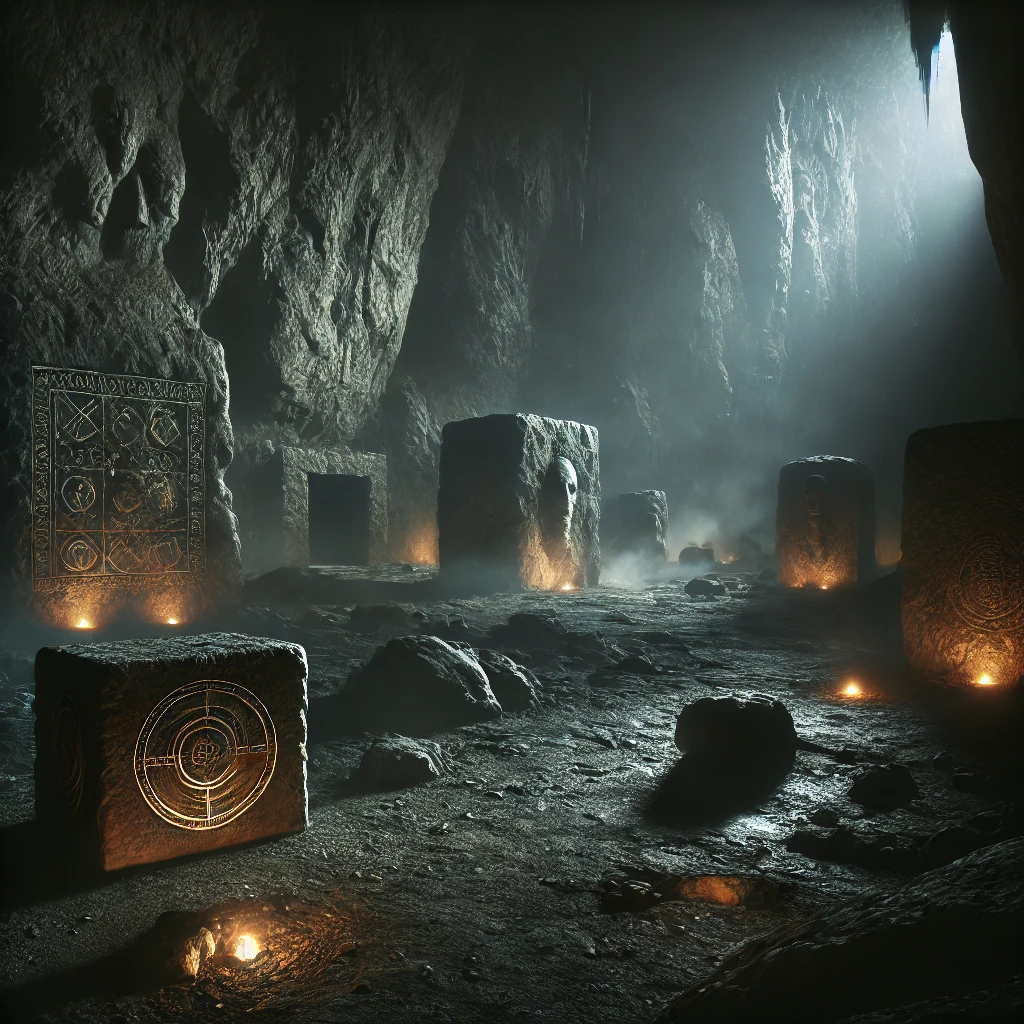Caverns, Cauldrons, and Concealed Creatures

William Michael Mott’s Caverns, Cauldrons, and Concealed Creatures embarks on an extensive exploration of global myths, folklore, and historical accounts that describe hidden realms beneath the Earth’s surface, inhabited by mysterious entities. Mott meticulously examines a wide array of sources, both ancient and contemporary, to construct a compelling narrative suggesting that tales of subterranean beings—ranging from giant humanoids and reptilian creatures to fairies and demons—may be rooted in actual encounters rather than mere superstition or metaphor.
Throughout the book, Mott identifies recurring themes across diverse cultures, highlighting how many civilizations share strikingly similar stories of beings emerging from underground to interact with or influence humanity. He explores these entities’ mysterious characteristics, frequently described as possessing reptilian or serpentine traits, with cold-blooded appearances, scaly skin, and slit-like eyes. Such descriptions, Mott suggests, may point to an ancient lineage predating humanity.
A notable feature of these beings is their pale or even translucent skin, a likely adaptation to their underground habitat. This skin is sometimes so thin it reveals veins or underlying structures, reinforcing the eerie, alien nature of these creatures. Additionally, Mott notes their large, bulbous eyes—perfect for seeing in darkness—giving them an otherworldly, luminescent quality, which, like nocturnal animals, reflects even the faintest light.
Physically, they are often described as slim and agile, with elongated limbs that allow them to navigate tight subterranean spaces. Their bodies possess a sinewy, almost spider-like appearance, lending an unsettling aura to their movement and physique. Reports of their size differ, with some depictions of childlike proportions, while others suggest these beings are taller than humans, enhancing the sense of mystery surrounding their diversity.
Descriptions of clawed hands and feet are also frequent, likely adaptations for digging or quickly maneuvering through rocky terrain. Some accounts mention webbed or elongated fingers, further reinforcing their alien nature. Mott notes that while some narratives depict them adorned in rudimentary garb or mysterious jewelry, others appear unclothed, which draws attention to their unique anatomical traits.
Beyond physical descriptions, Mott explores their rumored telepathic abilities, suggesting that these beings might possess an advanced mental capacity, allowing for communication without speech. This recurring theme adds another layer to their mystique and points to a different form of intelligence that operates on frequencies unfamiliar to humans.
Mott’s approach weaves mythology with empirical insights, hinting at an ancient, concealed ecosystem within the Earth. His interdisciplinary study encourages readers to consider that these “Deep Dwellers” might not simply be myth but could represent genuine encounters with a hidden race. In presenting these themes, Mott urges readers to reexamine folklore as more than fantasy, considering instead the possibility that humanity has had sporadic interactions with these subterranean creatures across generations.
By analyzing a range of sources and incorporating perspectives from geology, anthropology, psychology, and religious studies, Mott offers a comprehensive examination of the mysterious narratives surrounding subterranean beings. Caverns, Cauldrons, and Concealed Creatures serves as an invitation for readers to question conventional understandings and explore the possibility that these long-standing myths may indeed have roots in reality, albeit misunderstood.

